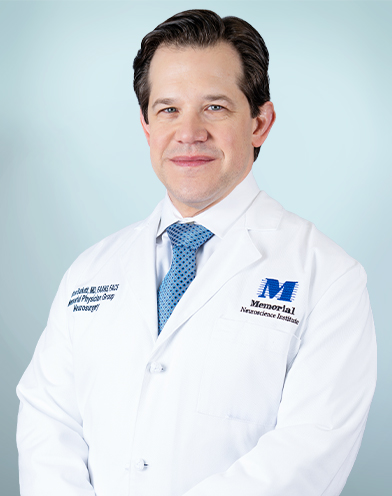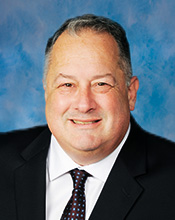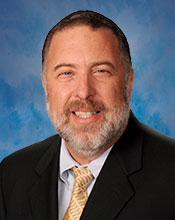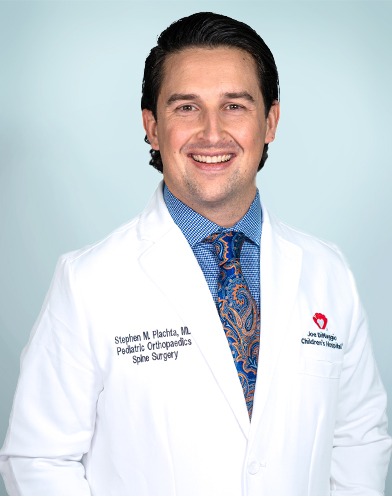Scoliosis and Complex Spinal Deformities
We offer many treatment options to ease pain and improve mobility.
What Are Complex Spinal Deformities?
With its many bones (vertebrae), discs and connecting tissues, your spine is designed for strength and flexibility. It has three natural curves in your neck (cervical spine), upper back (thoracic spine) and lower back (lumbar spine). These curves balance your head over your shoulders and your torso over your hips.
Spinal deformities are irregular curves in your spine. They may bend from side to side (scoliosis) or front to back (sagittal imbalance). The term “complex spinal deformities” refers to conditions that need extensive correction and follow-up care.
At Memorial Neuroscience Institute, we treat adults with scoliosis and complex spinal deformities. Children with these conditions receive care through pediatric orthopedics at Joe DiMaggio Children’s Hospital.
Looking for a Second Opinion?
If you’re not satisfied with the care you’ve received elsewhere and would like a second opinion, we’ll provide one. You can trust that our multidisciplinary team will conduct a thorough assessment and provide you with a customized treatment plan.Your peace of mind is important. Let us help you consider all your treatment options.
What Causes Spinal Deformities in Adults?
Spinal deformities can occur for many reasons. In adults, most spinal deformities are due to:
- Congenital conditions (present at birth) that may or may not have been treated in childhood
- Degenerative changes in the bones and discs due to arthritis and osteoporosis
- Inflammatory diseases, such as ankylosing spondylitis
- Injuries
- Neurological disorders, such as multiple sclerosis and Parkinson’s disease
- Non-cancerous and cancerous spinal tumors and their treatment
- Previous spine surgery
- Unknown causes
Types of Adult Spinal Deformities
Doctors classify spinal deformities by the nature of the abnormal curve and where it occurs. Common spinal deformities include:
Symptoms of Scoliosis and Complex Spinal Deformities
Changes in the curves of your spine can cause significant back and neck pain and have ripple effects throughout your body. Nerves can become compressed or pinched. Muscles and joints compensate for the loss of balance. You may experience:
- Pain
- Difficulty moving, breathing and swallowing
- Loss of balance
- Numbness or tingling in the arms or legs
- Visible change in the curve of the spine or alignment of your shoulders or hips
Diagnosing Scoliosis and Complex Spinal Deformities
Effective treatment starts with a precise diagnosis. Your provider will review your symptoms and medical history, perform a physical exam and order imaging tests.
The most common test for evaluating spinal bones is an X-ray. Your provider may also order other imaging tests, such as CT and MRI scans, to look for:
- Compression of the spinal cord and branching nerves
- Fine fractures or changes in the vertebrae not visible with X-rays
- Damage to soft tissues, including muscles, ligaments, tendons and discs
Scoliosis and Complex Spinal Deformity Treatments
Our experienced doctors work together to determine the best treatment strategy. Their goals are typically to:
- Ease pain and other symptoms
- Improve mobility
- Lessen the appearance of the deformity
- Prevent future spine problems
We also consider your treatment goals and use that information to develop a customized care plan. The main options for spinal deformity treatment are:
Whenever possible, we offer treatments that provide relief without surgery. At Memorial, you have access to exceptional care through our nationally recognized Memorial Rehabilitation Institute. You’ll find a comprehensive range of therapies to help realign the spine and manage pain, including:
- Physical therapy
- Acupuncture
- Braces
- Nonopioid pain medications
- Radiofrequency ablation
- Spinal cord stimulation
- Spinal injections
Learn more about non-surgical spine care.
Planning is an important aspect of spine surgery. Our neurosurgeons look at the alignment of your entire spine to reduce the risk of spine problems after surgery. They use advanced computer modeling to plan their approach. In some cases, they create patient-specific implants. Our neurosurgeons also use innovative tools during surgery to guide their movements and prevent spinal cord injury.
Recovery after surgery can take several months. Physical therapy is essential during this time to help you regain strength, flexibility and mobility.
Find out more about spine surgery.
Blue Distinction Center + for Spine Surgery
Memorial Regional Hospital is a Blue Distinction Center + for Spine Surgery. This recognition is reserved for centers that provide comprehensive spine surgery services and meet rigorous standards for patient outcomes. At Memorial, our patients have lower rates of hospital readmissions after spine surgery and fewer reoperations.
Scoliosis and Complex Spine Deformities: Why Choose Memorial Neuroscience Institute?
As a leading destination for neurosurgery and neurorehabilitation in the region, we offer:
- Trusted expertise: Our fellowship-trained neurosurgeons and rehabilitation doctors have extensive experience treating complex spinal deformities. They work together to ensure you receive the treatments that best meet your needs. Meet our team.
- Wide range of treatment options: We offer a full range of non-surgical and surgical treatments tailored to your condition. When you come to Memorial, you won’t have to go anywhere else for care.
- Efficient intake: Our intake process for new patients provides a streamlined path to care. We assess your condition and direct you to the right specialist — whether a neurosurgeon or rehabilitation specialist.
- Quality focus: Behind the scenes, our neurosurgeons meet frequently. They discuss patient outcomes, plan complex surgeries and find ways to improve care.
- Convenient locations: Our spine specialists see patients at offices in South Broward and Miami-Dade counties.











